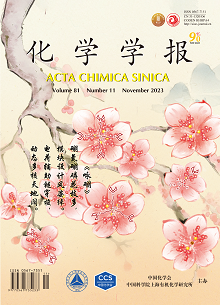Application of Biosensors in the Detection of SARS-CoV-2
IF 1.6
4区 化学
Q3 CHEMISTRY, MULTIDISCIPLINARY
引用次数: 0
Abstract
Since the outbreak of COVID-19, it is becoming important to screen SARS-CoV-2 with high accuracy, high efficiency, and rapidness, for epidemic prevention and control. Conventional detection technologies can not satisfy the requirements of examining massive people in a very short time. Biosensor technology, with the advantages of high sensitivity, good selectivity, low cost, easy miniaturization, and short detection time, is being used to develop real-time detection equipment, thus as a potential alternative for real-time detection of SARS-CoV-2 in clinical diagnosis. In the present study, the authors summarized the construction methods and principles for optical biosensors, electrochemical biosensors, wearable biosensors, magnetic biosensors, gold nanoparticle biosensors, and aptamer biosensors, followed by the introduction of the current application of multiple biosensors in SARS-CoV-2 detection. Conclusively, the technical bottlenecks and future development trends of biosensors in SARS-CoV-2 detection are proposed. © 2023 Shanghai Institute of Organic Chemistry, Chinese Academy of Sciences.生物传感器在SARS-CoV-2检测中的应用
自新冠肺炎疫情爆发以来,准确、高效、快速地筛查新冠病毒已成为疫情防控的重要内容。传统的检测技术已不能满足在短时间内检测大量人群的要求。生物传感器技术具有灵敏度高、选择性好、成本低、易于小型化、检测时间短等优点,正在开发实时检测设备,成为临床诊断中实时检测SARS-CoV-2的潜在替代方案。本文综述了光学生物传感器、电化学生物传感器、可穿戴生物传感器、磁性生物传感器、金纳米粒子生物传感器和适体生物传感器的构建方法和原理,并介绍了多种生物传感器在SARS-CoV-2检测中的应用现状。最后,提出了生物传感器在SARS-CoV-2检测中的技术瓶颈和未来发展趋势。©2023中国科学院上海有机化学研究所
本文章由计算机程序翻译,如有差异,请以英文原文为准。
求助全文
约1分钟内获得全文
求助全文
来源期刊

化学学报
化学-化学综合
CiteScore
3.60
自引率
40.00%
发文量
11793
审稿时长
1.8 months
期刊介绍:
Acta Chimica Sinica is a monthly publication in Chinese, which has been published by the Chinese Chemical Society since 1933. Originally known as the Journal of the Chinese Chemical Society before 1952, it aims to provide a platform for reporting new research findings in various areas of Chemistry. These areas include Physical Chemistry, Inorganic Chemistry, Organic Chemistry, Analytic Chemistry, Polymer Chemistry, and Chemical Biology. The publication covers a wide range of formats, such as Review articles, Accounts, Prospective studies, Communications, and regular Articles.
 求助内容:
求助内容: 应助结果提醒方式:
应助结果提醒方式:


